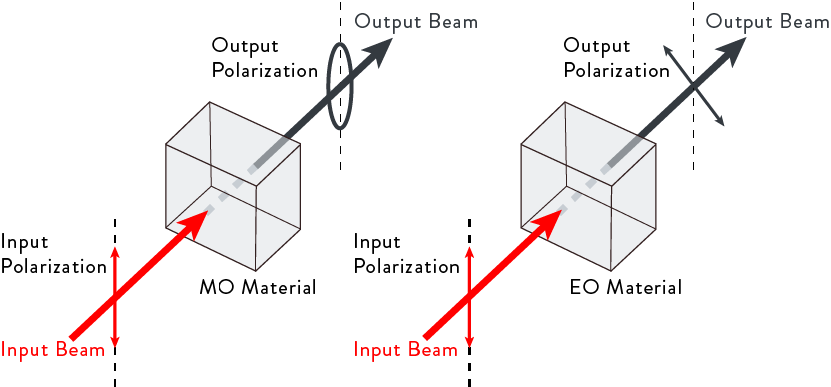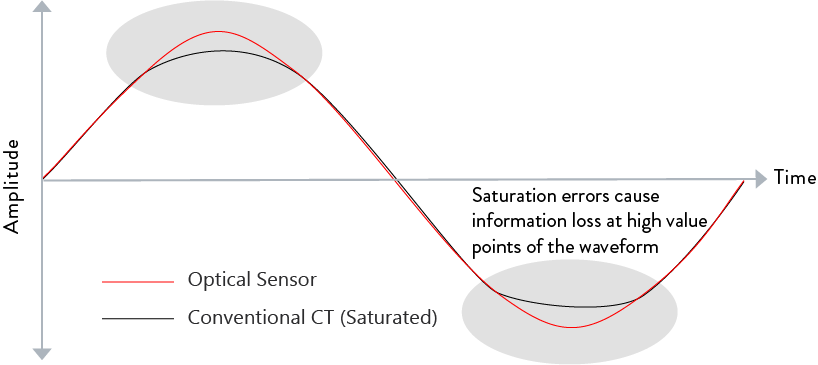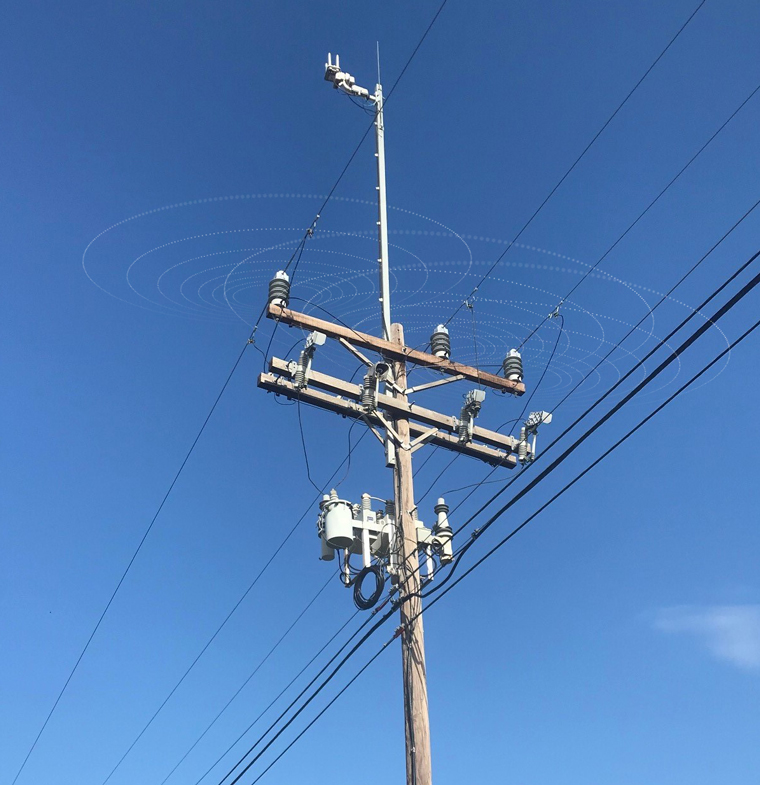Making Sense of
Optical Sensing
19th century physicists Michael Faraday and Friedrich Pockels provided the basic instructions: an optical medium’s refractive property can be altered by an electromagnetic field.
When you send a concentrated beam of light first through a polarized filter, then through a specialized crystal induced by an electric field, then finally back through a second polarized filter, the output beam will be altered in very specific, very consistent ways based on the properties of the electromagnetic field.
The Pockels electro-optic effect is used to measure the voltage of the electric field, while the Faraday magneto-optic effect measures the current state of the field.

All of this is possible using only the electro-magnetic field — not the current itself! Optical sensors
Micatu’s Gridview Platform has two primary components: the Gridview Optical Sensors which capture the raw information, and the m410B Optical Signal Processor which performs the necessary calculations at a rate of 15,000 samples per cycle and transmits the measurement data for use in analytics software packages.

All of this is possible using only the electromagnetic field — not the current itself!
MICATU’s Optical Sensor Platform has two primary components: the Optical Sensors which capture the raw information, and the certusEDGE EPU or m410B OSP which performs the necessary calculations at a rate of 15,000 samples per cycle and transmits the measurement data for use in analytics software packages.
Faster, Better, Safer
Because optical sensors are measuring the electromagnetic field, they remain safely isolated from the current while providing higher accuracy and precision.
Optical sensors not only measure all standard metrics with up to 0.5% accuracy, they’re able to measure the higher harmonics as well as phase, phase angle, and phase shift.
Moreover, optical sensors don’t carry any of the inherent risks associated with traditional sensors due to their non-conductive nature. They don’t degrade from excessive loads, they present no violent failure risk, and they don’t require current interruption for installation and maintenance.

MICATU: Pioneering the Evolution of the Smart Grid
While the physics has been around for over 150 years, it was the team at MICATU who engineered the innovations that made the physics commercially available for use on the distribution grid and down to 4kV. An exceptional team of industry experts who are passionate about energy and the way it is delivered, MICATU is just getting started changing the way the world sees with light.

Reshaping Utility Operations
How Grid-Edge Systems are Unlocking the Future of Utility Operations
Ready to transform your utility’s performance? Our latest whitepaper reveals how real-time monitoring, enhanced safety, and seamless renewable integration can revolutionize your grid management.
Contact Us
Looking to transform the way you collect data from the grid? Our experts will help you upgrade your measurement technology for the grid of the future.

